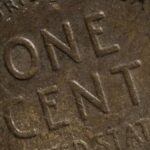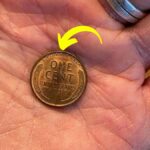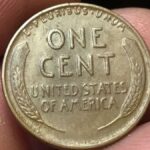Coin collectors and enthusiasts are always on the lookout for rare and valuable coins. One such fascinating coin is the Lincoln Wheat Penny, which has gained legendary status among collectors. A specific Lincoln Wheat Penny is rumored to be worth a staggering $89 million, and what’s even more surprising is that it could still be in circulation.
What is the Lincoln Wheat Penny?
The Lincoln Wheat Penny was first introduced in 1909 and was produced until 1958. It features a portrait of President Abraham Lincoln on the obverse (front) and two wheat stalks on the reverse (back), symbolizing prosperity. This design was later replaced by the Lincoln Memorial design in 1959.
These pennies were mostly made of copper, but during World War II in 1943, the U.S. Mint temporarily switched to zinc-coated steel due to a shortage of copper. However, a few 1943 Lincoln Wheat Pennies were mistakenly struck in copper, making them incredibly rare and valuable.
Why is One Lincoln Wheat Penny Worth $89 Million?
Not all Lincoln Wheat Pennies are valuable, but certain rare variations can fetch millions. The penny that is estimated to be worth $89 million is believed to be a 1943 copper Wheat Penny. This coin is unique because:
- Rarity – Only a few genuine 1943 copper pennies exist, as most were made of steel.
- Minting Error – These coins were accidentally struck on leftover copper planchets from 1942, making them a mistake that became highly valuable.
- Condition – The coin is rumored to be in near-perfect condition, which increases its worth.
- Historical Significance – Due to its connection to World War II and the U.S. Mint’s copper shortage, this coin is an important piece of history.
Could This Penny Still Be in Circulation?
Yes, it is possible! Since pennies are commonly used and often overlooked, this rare coin could still be in someone’s pocket, jar, or old coin collection without them realizing its value. Some people may unknowingly spend such a coin without checking its details.
How to Identify a Valuable Lincoln Wheat Penny
If you want to check if you have a valuable Lincoln Wheat Penny, look for these features:
- Date and Material – A 1943 penny made of copper instead of steel is extremely rare.
- Magnet Test – A real 1943 copper penny will not stick to a magnet, while a steel penny will.
- Mint Mark – Some of these rare pennies have mint marks like “D” (Denver) or “S” (San Francisco) below the date.
- Condition – A well-preserved coin with minimal scratches or damage is worth more.
Other Valuable Lincoln Wheat Pennies
Apart from the 1943 copper penny, other rare Lincoln Wheat Pennies include:
- 1909-S VDB Penny – Only 484,000 were minted, making it highly collectible.
- 1914-D Penny – Scarce and valuable, especially in good condition.
- 1922 No “D” Penny – A unique minting error makes it rare.
Conclusion
The thought of a Lincoln Wheat Penny worth $89 million still being in circulation is exciting for coin collectors and everyday people alike. If you come across a 1943 copper penny, you might be holding a fortune in your hand. Checking old coins carefully and learning about their history can lead to surprising discoveries. Who knows? You might be the lucky one to find this legendary penny!
Disclaimer: The prices mentioned for rare coins, including the Lincoln Wheat Penny, are not guaranteed and may not be entirely accurate due to market fluctuations and varying appraisals.
Disclaimer: This article is written for informational purposes only. We do not guarantee its completeness or accuracy, please confirm with official sources.



